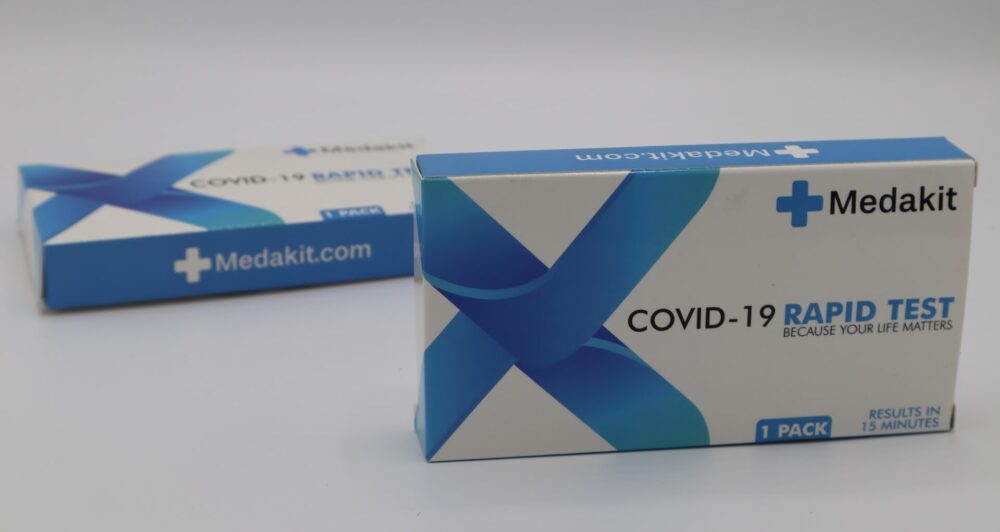The number of COVID positive cases is directly proportional to the number of tests conducted every day. Moreover, it’s not the testing but also the infection which has spread to millions universally; it cannot be predicted precisely that when the disease would finally take a leap and halt its progress.
The curve of COVID testing facilities has gone up majorly since the past seven months with the authorities and medical professional consistent efforts to develop a vaccine that would help eradicate the pandemic.
Meanwhile, people cautious and anxious about getting themselves tested before going outside into the world or attend any public gathering; they have been turning more and more towards rapid antigen testing. But is the rapid antigen testing trustworthy in providing accurate results?
There has been a significant discrepancy witnessed with the kind of results antigen test produces. Many people have used the rapid COVID testing kit developed by biotech company Quidel at a Manchester, Vermont, clinic during the July month, and the results were not accurate according to the standards of the generic PCR (Polymerase Chain Reaction) COVID test.
In the US, the various state departments conducted this antigen rapid testing to measure the level of accuracy it produces, and it was found that out of the tests conducted on 65 people, only four were accurate when measured with the standard PCR test.
With the beginning of Unlock 4.0 in India and other countries as well, schools, workplaces, malls are set to open and function just like it was before the pandemic, only with specific precautionary measures in hand. Since things have taken a different toll, people are moving towards rapid COVID Testing more than ever.
It’s necessary to understand in the present scenario that PCR and rapid antigen testing is procuring less accurate results wherein test takers are receiving false-negative and false-positive results. It is confusing, but the experts are of the view that these inaccuracies in results might also cause people to take extra precautions in the future while traveling from one place to another.
Availability of categories in COVID Testing
The current research and findings provided the results that three kinds of SARs-COV-2 COVID testing are available that include, Genetic Test (PCR test where RNA is looked for in the nose or throat via a swab).
Antigen Test specifies protein on the virus surface, and Antibody Testing is not used to diagnose active infection; instead, the test looks out for antibodies and immune response in an already infected person.
World Health Organisation (WHO) and Centers for Disease Control and Prevention (CDC) considers PCR testing as the standard and generic Testing for COVID diagnosis than rapid testing due to the efficiency of results it has been producing from the last five months.
Rapid testing only takes saliva from a throat or Nasal samples with the help of a swab, which is then used for quick testing and provides results in 15 minutes. The scaling up in rapid testing is probably witnessed due to its delivery of early results. But the accuracy is not up to the mark.
Some countries have considered the option of running the samples of rapid Testing through PCR as well, and then confirm the results (whether the person has an active infection or not). But even in PCR Testing, there could be approximately 29 percent of inaccuracy. People are to wait more than 24 hours of duration to receive their test results in case of PCR, but rapid does the same task in less tenure.
The factors varying the tests and other things
The inaccuracy of a test result varies on various aspects beginning from the manufacturer of the testing equipment, the training and education of healthcare professionals who perform or collect the sample of the test- mainly the rapid tests and much more.
There are individual professionals who, according to Medical News Today, have claimed the need to move the testing out of the lab, to eliminate the issue of delay in results, which anyhow becomes negligible after two weeks. The patient would then miss the opportunity to isolate himself and reduce the spreading of the virus any more.
Dr, Alexis Nahama, who is the senior vice president of diagnostics at biotech company Sorrento Therapeutics Inc. in San Diego, told Medical News Today that,
It’s really difficult to overcome backlogs simply by increasing the number of PCR machines. To really be able to run the testing at a massive scale, you need to be able to decentralize where the test is being done, which is why you need the doctors’ offices and the dental offices to be running the tests. You can even have minilabs that can run a lot of the tests at airports.
The company, as mentioned above, Sorrento, is working on launching a rapid test which was developed by Dr. Zev Williams and his team at the Columbia University Fertility Center in New York City. The test would detect the presence of SARs-COV-2 RNA by collecting saliva samples of the test takers.
This test is developed to increase the number of testing even outside the labs where small schools, universities, and workplaces sand use them and detect active infection in a person who has just come traveling from the outside. The first batch of testing showed high accuracy rates parallel to PCR and would produce the results in 30 minutes. Also, the research team mentioned that if the impact is positive, the fluid will turn yellow.
The senior vice president of Sorrento’s regulatory affairs, Dr. Mark Brunswick, said that,
This test would be absolutely suitable for a doctor’s office, or a hotel before people check in, or the airport before people get on a plane. The company expects to submit an application for approval of its saliva test to the Food and Drug Administration (FDA) very soon.
Continuing of alternatives like Rapid Testing
Even though rapid testing is producing inaccurate results but curbing the infection from spreading, every state and country must increase the rate of testing, which would help in overcoming the paranoia and illness even before it has made its place inside a body.
The hospitals and labs should continue using the standard testing method that produces accurate results. Still, small cafes, schools, workplaces, malls must use these inaccurate testing methods as well because it is not always that a test produces erroneous results.
To not compromise with the accuracy, labs and various other institution looks for testing equipment which ends but low in speed and convenience. The sole purpose must be stopping the spread of the virus by taking precautionary measures at the beginning itself.





Comments are closed.